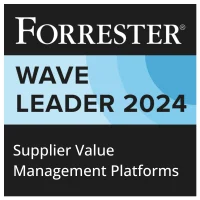Procurement in finance refers to the process of acquiring goods and services from external sources through a structured approach to improve efficiency, ensure compliance, and maximize value. It involves identifying requirements, evaluating supplier options, negotiating contracts, managing purchase agreements, and ensuring timely delivery within budget constraints. The goal is to achieve the most favorable terms and conditions while minimizing total costs and risks.
Key Benefits
– Cost Savings: By leveraging AI-driven solutions and streamlined processes, procurement in finance leads to significant cost reductions, optimizing spend and reducing unnecessary expenditures.
– Efficiency Gains: Procurement processes become more efficient, reducing procurement cycle times and freeing up resources to focus on strategic, high-impact activities.
– Strategic Decision-Making: With enhanced data analytics and AI capabilities, procurement provides valuable insights that inform strategic decisions, driving long-term business value.
– Risk Management: Incorporating advanced risk assessment tools helps organizations predict and mitigate supply chain risks, ensuring operational resilience and compliance.
– Supplier Innovation: Fostered collaboration with suppliers encourages innovation and value creation, enhancing the quality and effectiveness of procurement outcomes.
Related Terms
– Cost Savings: By leveraging AI-driven solutions and streamlined processes, procurement in finance leads to significant cost reductions, optimizing spend and reducing unnecessary expenditures.
– Efficiency Gains: Procurement processes become more efficient, reducing procurement cycle times and freeing up resources to focus on strategic, high-impact activities.
– Strategic Decision-Making: With enhanced data analytics and AI capabilities, procurement provides valuable insights that inform strategic decisions, driving long-term business value.
– Risk Management: Incorporating advanced risk assessment tools helps organizations predict and mitigate supply chain risks, ensuring operational resilience and compliance.
– Supplier Innovation: Fostered collaboration with suppliers encourages innovation and value creation, enhancing the quality and effectiveness of procurement outcomes.
References
For further insights into these processes, explore Zycus’ dedicated resources related to Procurement in Finance:
- The Future Of Category Management Is Here!
- Optimizing Your Services Procurement Process: A Guide to Efficiency
- In conversation with Alfred Aloysius – Asian Procurement Part 1
- The 11 Most Important KPIs to Unlock Sustainable Procurement Software Performance in 2023
- Building a Resilient Supply Chain in the COVID-19 Era and Beyond
White Papers
Master the UK Procurement Act 2023: Ensure Compliance & Drive Procurement Excellence

Filter by
Compliant Invoicing
Compliant Invoicing refers to the process of generating, submitting, and managing invoices in adherence with legal, regulatory, and contractual requirements.
Continuity Plan
A Continuity Plan is an organized set of policies and procedures designed to ensure that a company’s essential operations can
Cost Modeling
Cost Modeling in procurement refers to the analysis and estimation of the total cost of ownership of a product or
Contract Audit
Contract Audit is a systematic evaluation of agreements and related documentation to ensure compliance with contractual terms, identify discrepancies, and
Procurement Cycle
The Procurement Cycle refers to the end-to-end process through which an organization identifies its needs, sources suppliers, negotiates contracts, places
Procurement Master Data Management
Procurement Master Data Management is the disciplined approach to managing core, consistent procurement information, including supplier, product, and contract data,






















































